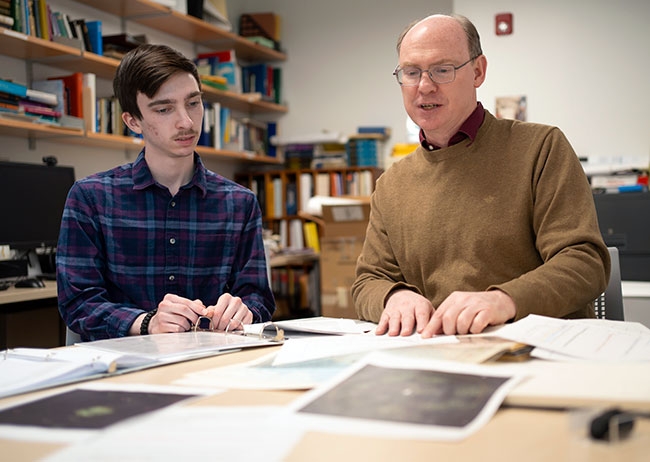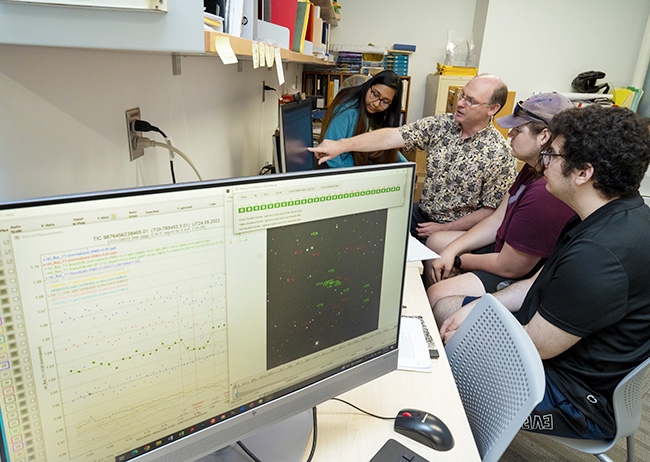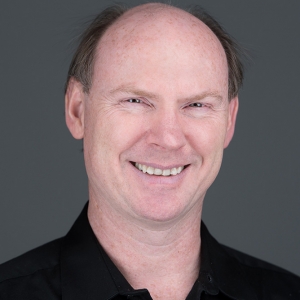It’s not every day a person plays a role in discovering a planet.
But several students, working with Francis Wilkin, a senior lecturer in the Department of Physics and Astronomy, have done just that.
“We have two separate papers accepted for publication for co-discovering exoplanets, which are planets outside our solar system,” said Wilkin. “One paper is about the discovery of three mini-Neptunes in the same solar system, and the other paper is about the discovery of two mini-Neptunes.”
Both will appear in the Astronomy & Astrophysics journal.
Sometimes known as gas dwarfs or transitional planets, mini-Neptunes measure between two and four times the size of Earth. They are scattered in the far reaches of the Milky Way, about 150 light years or a quadrillion miles away.
“We are very excited for our first exoplanet discovery papers and proud to be among many other contributors to this research, including scientists from Switzerland and other countries,” Wilkin said.
“My time conducting research with exoplanets is unbelievable,” said physics major Devin Ramos ’25, a co-author on one of the papers. “Before coming to Union, I never expected to be doing this much research, let alone co-authoring a paper. The opportunity has been great all around, and every day I’m amazed at all that has been accomplished as part of this team.”
The astronomy major was introduced two decades ago, building upon classes that had previously been offered as electives. Interest in the field has grown in recent years, with students eager to explore the vastness and complexity of space and the Earth’s role in it.
More and more, students are doing an astronomy practicum, independent study or sophomore project. Over the past few years, Wilkin has advised more than 20 students on their undergraduate research.
In addition, the observational astronomy course offered every other fall term covers modern research techniques using the College observatory’s 20-inch optical telescope and CCD (charge coupled device) camera within a rotating dome. Wilkin is manager of the observatory, located in the F.W. Olin building.
Students in the observational course have had their research on asteroids and a nova published in noted papers and journals, including the Minor Planet Bulletin and the Astrophysical Journal Letters.
“An exploding star, Nova Hercules, happened to explode in time to be studied by my students during the fall 2021 term,” Wilkin said. “The entire class decided to emphasize exploding stars and studied a total of four nova-like or cataclysmic variables.”
Wilkin and Andrew Cahaly ’22 published the results in the Astrophysical Journal with Columbia University professor of astronomy Joe Patterson and the Center for Backyard Astrophysics, an amateur-professional team researching exploding stars.
“It’s wonderful to be able to offer our undergraduates all of these exciting opportunities and to guide a younger generation of aspiring astronomers who are curious and engaged,” Wilkin said.
In fall 2021 Wilkin formed a research team to allow students to work on astronomy projects year round. To date, 16 students have participated on the team’s research, including seven this term.
“Nearly everyone on our team has gotten published in professional papers and/or astronomy journals,” Wilkin said.
The majority of participants have been first-year students, like Niha Das ’26, who was published in a paper about the asteroid Tampere as a new undergraduate. She continues to study trojan asteroids, which share the orbit of Jupiter beyond the main asteroid belt.
“Being able to engage in research my first year was one of the most momentous experiences for me,” said Das, a dual major in physics and computer science who also has a minor in music. “The exposure I got while presenting my research in different conferences has motivated me to pursue higher education and a career in research.”
Dimitris Vasileios Zora ’26, a physics major from Greece, spent the summer after his first year on campus collaborating on exoplanet research with Wilkin and fellow physics major William (Will) Grimwood ’24 of New Zealand.
“That was a great introduction to what research is like in the academic world, with supportive faculty and an abundance of resources available to me,” Zora said.
Elizabeth-Veronica (Eva) Crowley ’24 was first author on a published journal article for her astronomy summer research on asteroid Moultona in the outer part of the asteroid belt. She combined 15 nights of observation to produce a “light curve,” or graph of brightness versus time.
“I loved doing summer research! Mine involved observing an asteroid in the asteroid belt to figure out its rotational period. The asteroid had no previously published light curve on it, so I was one of the first people to look at this asteroid for information,” said Crowley, a physics major with minors in astrophysics and dance.
“From this, researchers can use this data to figure out the shape without ever sending up a camera to take a photo of it. It meant so much to me to be able to put a lot of (very late night) hours into a project and have something physical come out of it.”


